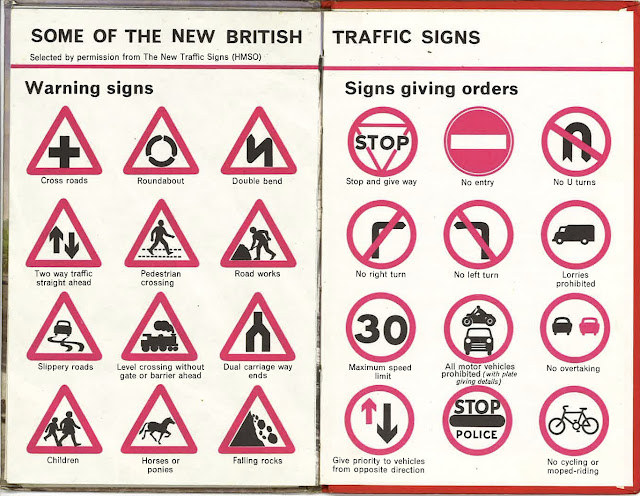This year both the De La Warr Pavillion and the House of Illustration hosted a Ladybird illustration exhibition. And now this Christmas Penguin have released a number of humorous adult spoofs of the books using the original artwork. Ladybird's time in the sun has returned, even though many of the things I love most about what they depict are vanishing: buildings, vehicles, attitudes, ways of life.
I was lucky enough to be asked to do a talk about Ladybird and modernism for the House of Illustration, based on the blog pieces I'd written. And so I collected more books, consulted Ladybird expert
Helen Day, and scanned in more images. I couldn't resist returning to Ladybird here with some of those treasures. Take a trip around postwar Britain with them, and I hope you enjoy them, and some of the things they represent, as much as I do.
 |
| 1. This is classic John Berry: People at Work: The Airman in the Royal Air Force (1967), operating a radar in the unglamorous arse-end of modernity. |
|
|
 |
| 2. Another People at Work, this time, On the Railway (1972) showing British Rail in modernist gleaming glory alongside the dirty, grimy reality. John Berry again. |
 |
| 3. More John Berry (yes, I'm obsessed). The Public Services: Electricity (1966) shows the pre-privatisation world of the national grid. |
 |
| 4. Robert Ayton's beautiful illustrations in the Achievements series include these spectacular endpapers for The Story of Furniture, 1971. |
 |
| 5. People at Work: The Nurse (yes, John Berry, shut up) from 1963 shows the NHS looking to the future in the era of Carry Ons rather than the reign of Jeremy Hunt. |
 |
| 6. How It Works is another of my favourite series. This one, The Telephone, went through several manifestations as the GPO went through various changes over the two decades the book was in print. This image by Bernard Robinson appears to show one of the Liver Birds making a call in in a K8 phone box, introduced in 1968. |
 |
| 7. People at Work: The Road Makers (John Berry, 1967) brings two modernist icons together - pioneering Ladybird books and the new British road signage. Margaret Calvert and Jock Kinneir’s 1963 standardised signage
remains a triumph of simple modern communication. And of course we all love
Margaret leading her younger brother across the road in the school sign, a
triumph of feminism in graphic design. |
 |
| 8. Man and His Car is a Ladybird Leaders book from 1974, illustrated by Gerald Whitcomb and Martin Aitchison. As you can tell from the text, the tone of the books has become rather didactic by this stage, but there's no shying away from brutalist car parks and modernist homes. |
 |
| 9. How It Works: The Hovercraft from 1969 is illustrated by Bernard Robinson. There's not much that says 'postwar technology' like the hovercraft, and this book was superby cutting edge at the time. |
 |
| 10. And finally, back to People at Work: On the Railway. I travel from Euston most weeks, and this pristine image of the station makes me happy every time I see it. |
Read the first part of my Ladybird odyssey
here, the second episode
here and the third one
here.
- - - - - - - - - - - - - - - - - - - - - - - - - - - - - - - - - - - - - - - - - - - - - - - - - - - - - - - - - - - - - - - - - - - - - - - - - -





















i have now become obsessed with collecting these too John. all because of YOU. love them! keep em coming :-))
ReplyDeleteMark White
Excellent! And I do have some more up my sleeve...
Delete'Man and his Car'? Did women not drive back then? Thanks for the picture of the house with the large garage. Strange how you remember things from decades ago like this but I don't know what I had for dinner yesterday! I guess these days I'm preoccupied remembering logins and passwords and all other information is deemed superfluous by my brain.
ReplyDelete